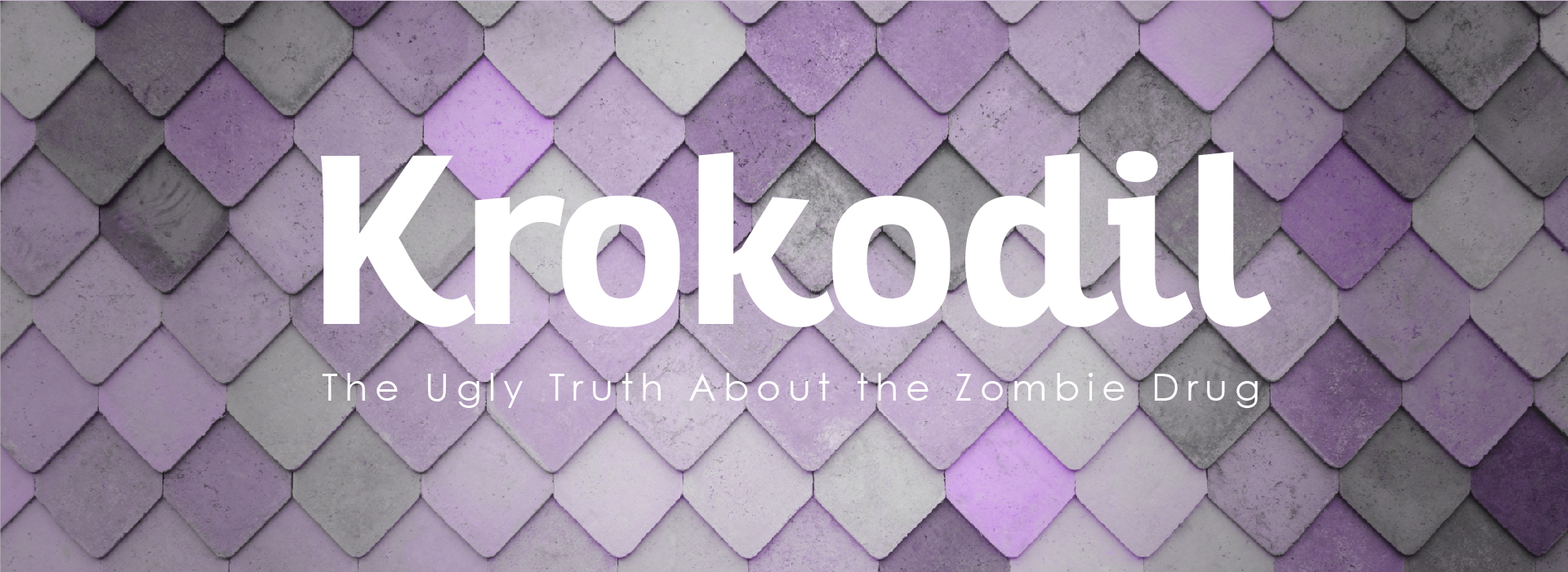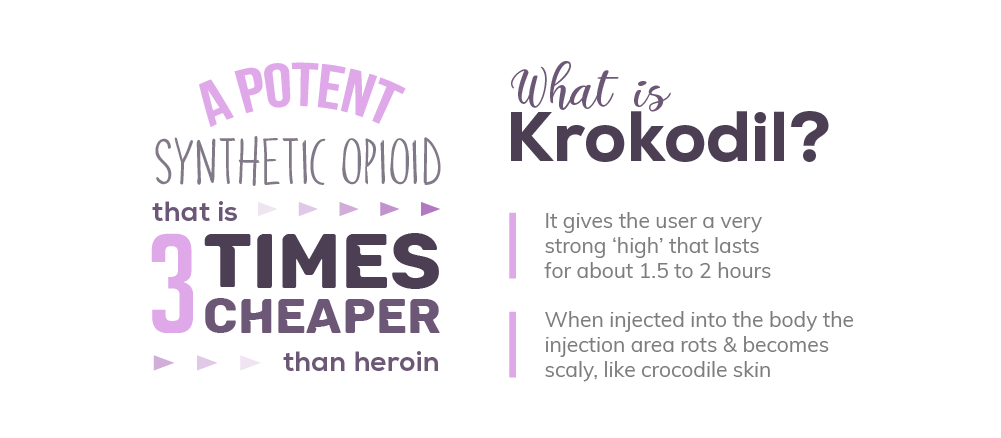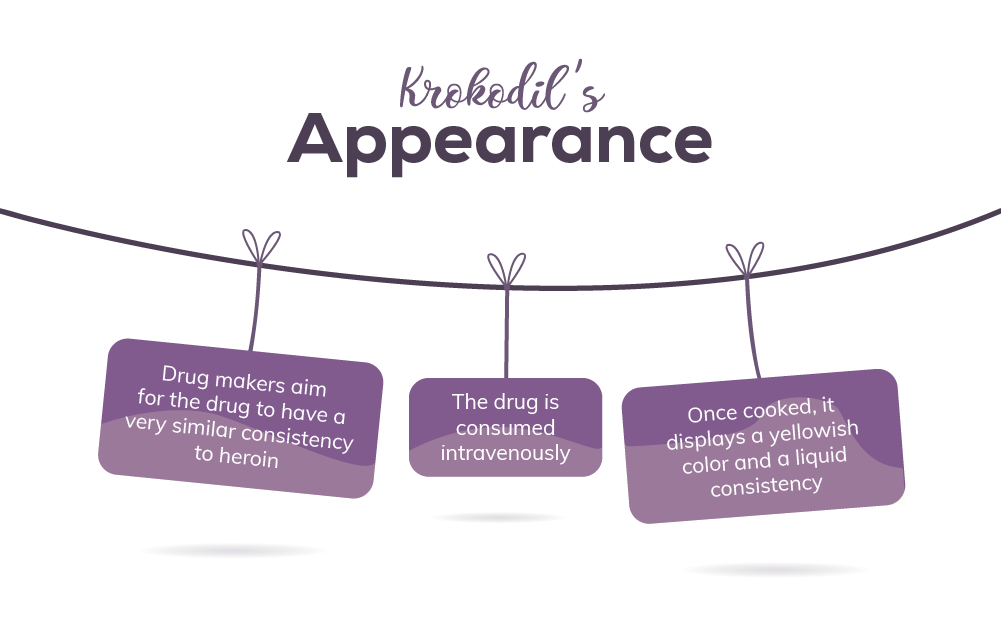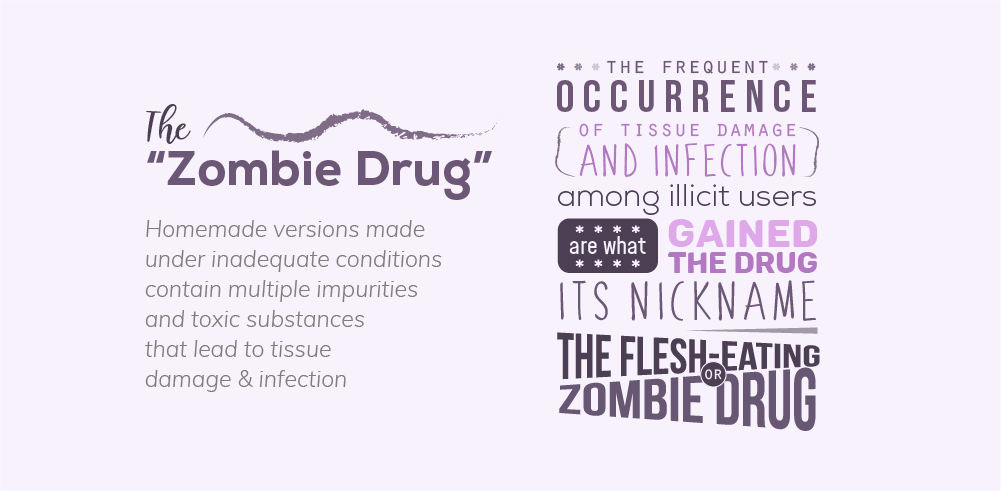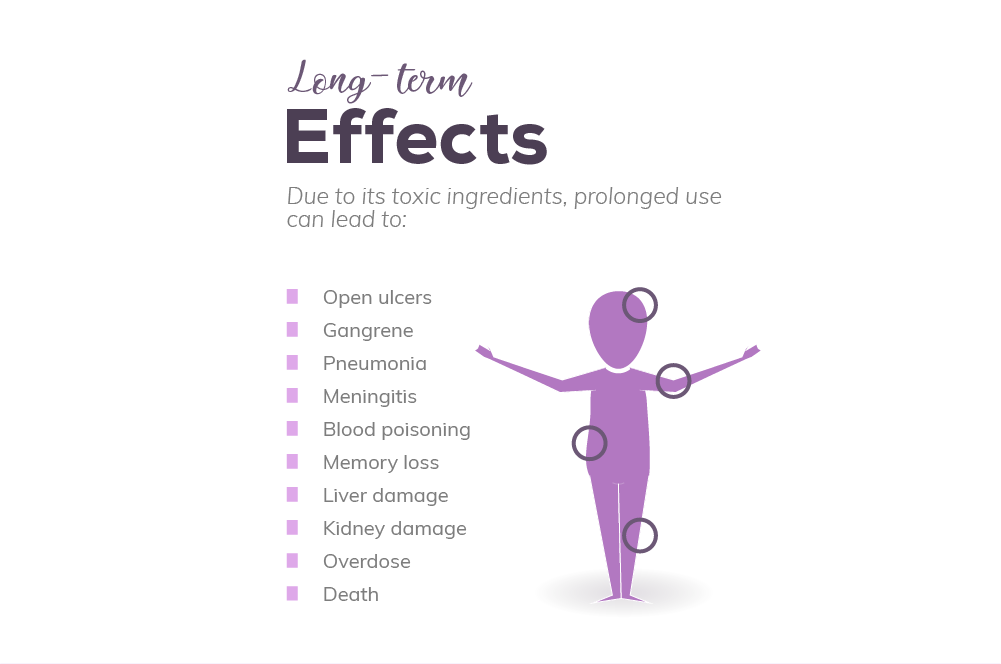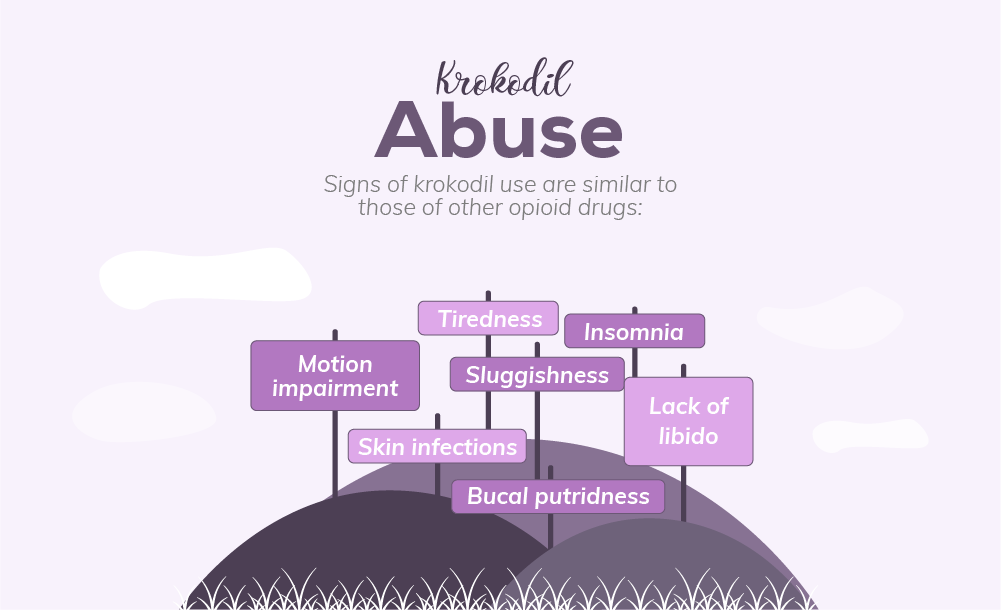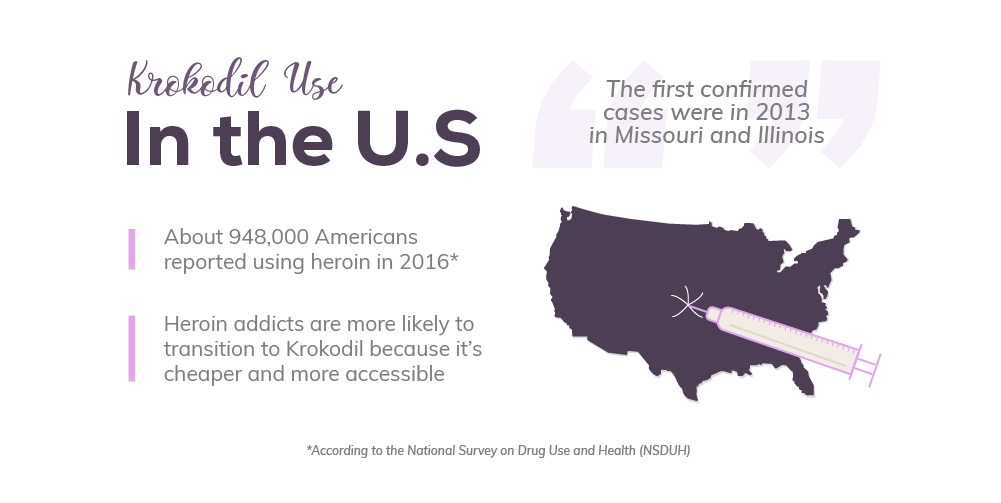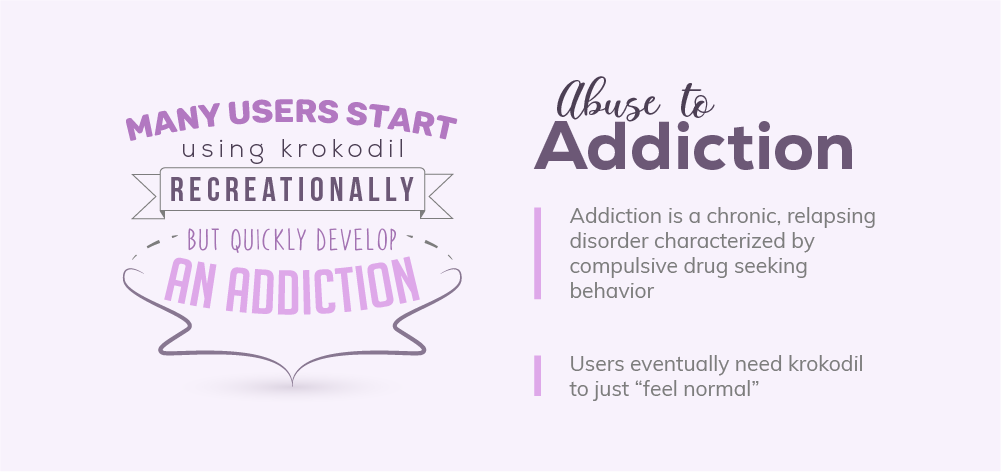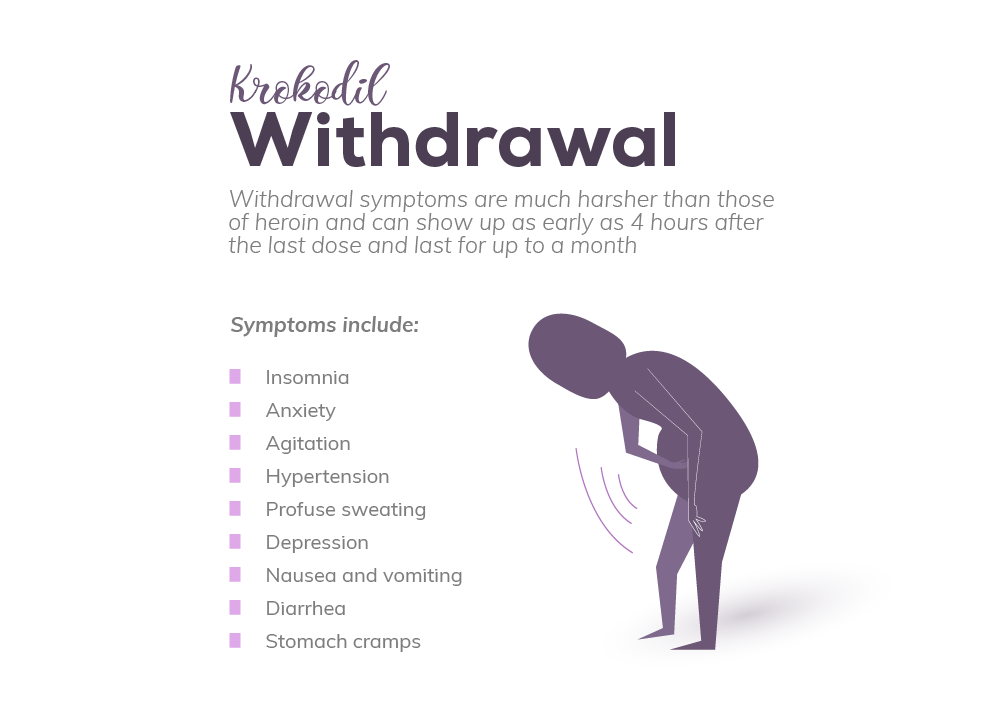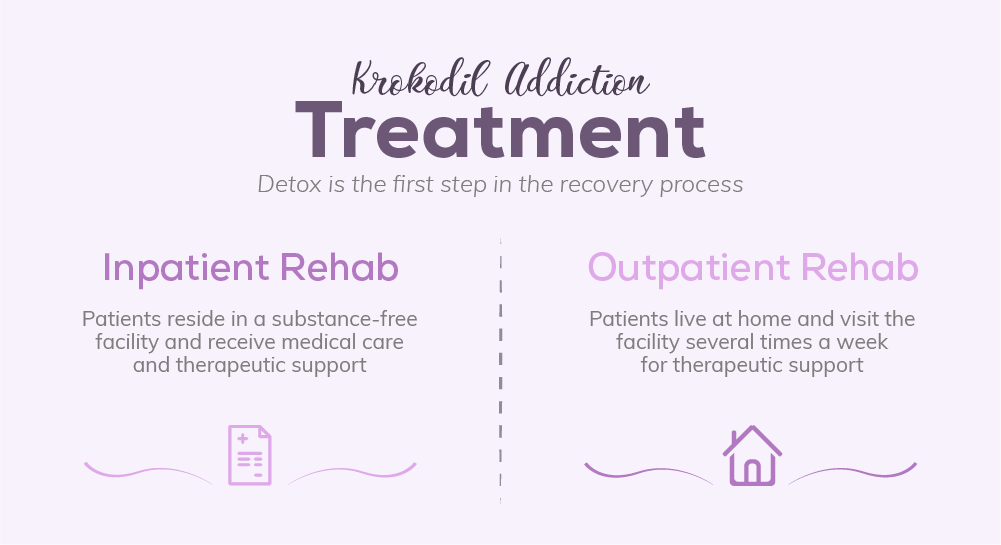Krokodil is a deadly heroin knockoff that took the world by storm in 2012. What is it, though, and what has its impact been since then? Public awareness of krokodil, dubbed the “flesh-eating zombie drug,” burst onto the scene when VICE released a 25-minute krokodil documentary related to the drug’s impact in Siberia. The video went viral, collecting more than 14.5 million views at the time of this writing. American reporters called it, “more deadly than heroin,” insisting parents keep an eye out on their children for signs of use. While there is truth to the fact that it is an incredibly dangerous drug, the prevalence of it in America remains low. The impact of this drug on those who use it is anything but low. Although it doesn’t turn users into actual zombies, it poses drastic effects on its users. What exactly is krokodil? Why do people use the “Crocodile Drug” and what does it do? Read on to learn more about the zombie drug and how it affects those who use it.
“Get your loved one the help they need. We provide outpatient addiction treatment in Denver and Summit County, see more here.”
Krokodil: What Is it and Where Does It Come From?
After VICE published their video, millions of people shared it around the world. A panic rose up across America with hundreds of thousands of parents frightened their children would turn to this drug next. Dozens of ill-researched articles spread the fear further, resulting in widespread and misinformed alarm. Krokodil addiction started to impact Siberia in the early 2000s, confusing doctors when addicts began to show up with dark, scaly patches of skin. Upon further investigation, they realized users were injecting a drug called desomorphine into their veins. They called it krokodil (crocodile in Russian) due to its effects on the skin. Despite its prevalence across the ocean, limited reports surrounding the stateside use of krokodil exist. There was the case of a 30-year-old user in Missouri whose finger reportedly fell off after the surrounding skin decayed due to intravenous crocodil use. Another case was reported by doctors in Illinois in 2013. Still, the Drug Enforcement Agency insisted there was true cause for alarm over an epidemic in America. 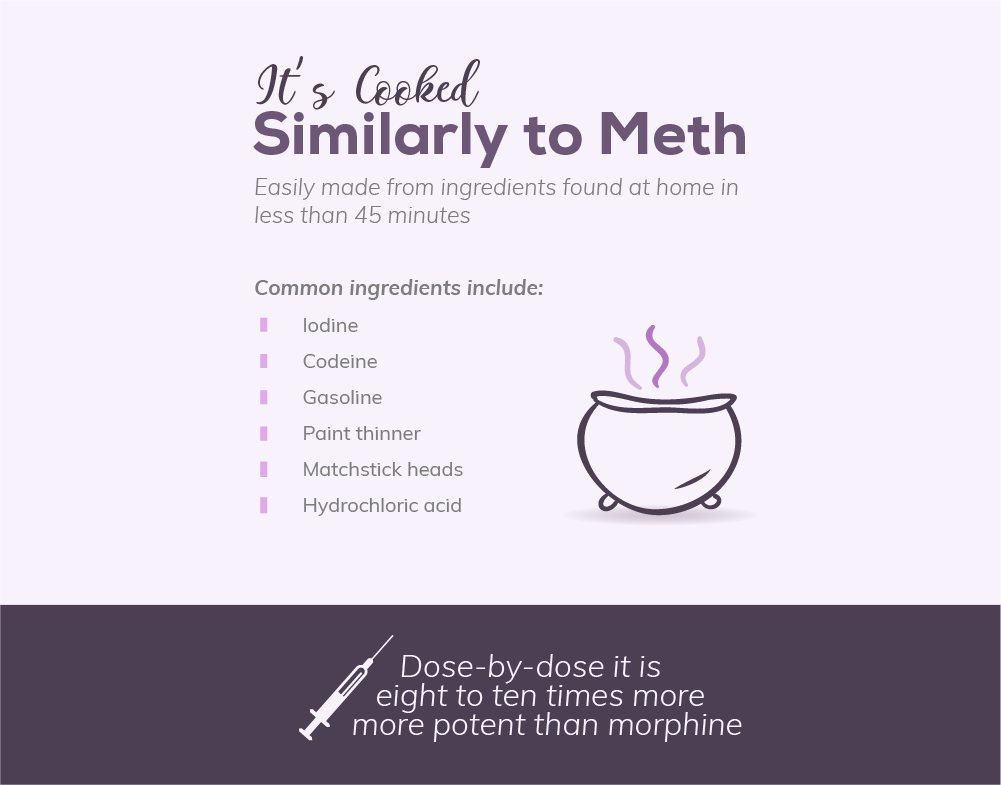
- Codeine
- Paint thinner
- Gasoline
- Hydrochloric acid
- Red phosphorous scraped from matchboxes
- Multiple other harmful chemicals
After the United States cracked down on the sale of codeine in June of 2012, it became much more difficult to gather the necessary ingredients. Users who knew how to prepare krokodil had a more challenging time making it. Still, it didn’t stop them from finding ways to find codeine on the black market. Because of this, crocodil is still relatively easy to produce at home.
What Does It Look Like?
Made mainly from liquid ingredients, the crocodile drug aims to mimic the consistency of heroin. Addicts cook the drug in a manner similar to opiates and inject it in the same fashion. Once cooked, desomorphine has a clear, yellowish color and a liquid consistency, allowing for intravenous injection.
Effects of The Zombie Drug
What could possibly cause someone to risk injecting a drug they know will cause such a drastic impact on their physical health and appearance? The effects produced by the crocodile drug are similar to heroin: an intense feeling of euphoria followed by a serene, relaxed sense of calm. Addicts quickly find these relaxing moments to be fewer and farther between as their addiction progresses, though. Soon it becomes a race to avoid the drug’s comedown and the effects are no longer as pleasurable. Additionally, when the drug is injected, the toxic chemicals used to create the concoction kill the skin cells around the injection site. Unsightly sores and skin ulcers develop, along with vein and tissue damage. Organ failure is another likely possibility for those who use the crocodile drug. The lifespan of those who use it heavily tends to be cut short; early death for krokodil addicts is almost impossible to avoid.
Long-Term Effects of Krokodil
Since krokodil is made from a number of various toxic chemicals in small homemade batches, the long-term effects are somewhat unpredictable but always severe. The harmful combination of cough syrup and other toxic chemicals results in a number of health complications such as:
- Skin infections at the injection site
- Open ulcers
- Infections in blood vessels
- Scaly patches of skin
- Blood poisoning
- Soft tissue infections
- Gangrene
- Eventual amputation of affected limbs
- Speech impairment or impediment
- Loss of fine motor skills
- Memory impairment or memory loss
- Overdose
- Death
The sudden and severe side effects take place quickly and there is often little doctors can do to reverse them. With so few closely-studied cases, the long-term effects of krokodil use are still somewhat unclear. In addition, users often do not live long enough to determine the impact of use after many years’ time.
“We treat both addiction and co-occurring disorders and accept many health insurance plans. Take a look at our outpatient rehab program.”
Why Do People Use Such a Dangerous Drug?
The revulsive physical reactions the body has to injecting krokodil are enough to keep most people away from it. However, the crododile drug that provides a high so similar to heroin comes at only a fraction of the cost. The high received from a $20 bag of heroin can be replicated by a bag of krokodil for only a few dollars. Just as painkiller addicts turn to heroin when prescriptions become too expensive to afford, when their heroin habit becomes too expensive, some may turn to a cheaper alternative like krokodil. Since it is relatively easy to find what krokodil is made of, addicts may even decide to cook it themselves.
Prevalence of Krokodil Use in the United States
There is little coverage of cases of crocodil outbreaks outside of those reported in Missouri and Illinois. Individuals admitted to hospitals in those locations showed signs of use, including the scaly, rotted skin the drug is named for. Krokodil is likely used only by heroin addicts who no longer have the financial ability to support their habit. Since it is created from a batch of rather accessible chemicals, desperate addicts turn to the homemade concoction to support their habit.
Should You Be Concerned About the Crocodile Drug’s Impact?
Despite the massive media uproar at the start of its discovery, the impact of crododil in the United States still appears to be minimal. It was another drug that caused a panic amongst parents worried about their children getting into hard drugs. While there were a few reported cases, widespread use of the zombie drug has yet to be reported with any true weight to the claims. Still, regardless of the number of people who use it, the severity of the health risks associated with krokodil use should not be shrugged off. The scaly skin, rotting flesh, and sudden death it causes should terrify anyone. Although it is not common, it is still a dangerous drug that you should know about. Additionally, like other street drugs, there is no regulation of its production. This leads to little consistency between batches, meaning you never know how strong the next batch will be. This can easily lead to taking too big of a dose and, in the worst-case scenario, result in overdose or death. Any drug that can kill so quickly is not one to be taken lightly.
Is There Krokodil Addiction Treatment Available?
Addiction treatment centers specialize in treating all types of addiction, including krokodil addiction. No matter which drug is used, the disease of addiction affects people in the same manner. Addicts usually use at first to escape and then to overcome the cravings caused by their drug use. There are multiple types of treatment options available for those seeking sobriety:
- Detox: Medical detox helps addicts separate from and manage withdrawals that occur during the first week of getting clean.
- Inpatient Rehab: Usually taking place over a 30-, 60-, or 90-day period, inpatient rehab removes addicts from their everyday environment and provides a place for them to focus strictly on their recovery and helping themselves get better.
- Intensive Outpatient Program (IOP): IOP is a helpful option for those who have full-time commitments during the day, such as work or school. Programming often takes place in the evening, allowing for attendance at responsibilities during the day.
Krokodil addiction treatment works in the same way other types of addiction treatment work. The recovering addict will work with a team made up of counselors, nurses, and a case manager. They learn more about themselves and their addiction through a combination of educational sessions and then through processing in individual and group therapy. Many treatment centers also offer group activities to show those in early recovery that it is possible to have fun in sobriety. Learning how to replace negative behaviors with positive hobbies and activities is an important part of getting sober. Addicts often used to fill up empty time; counteracting boredom with interests and passions will provide an alternative to using drugs.
What to Do if Someone You Know is Using The Zombie Drug?
Do exactly what you should do with anyone you know who is using hard drugs: talk with them first. Discuss your concerns for their health and overall well-being. Approach them from a position of loving concern and explain the changes you’ve noticed in their behavior. Let them know there are options available if they want to get clean and sober. You can help by walking them through and helping them find an addiction treatment center. Offer your assistance and let them know you are there for them. Support from loved ones is important during early sobriety when relapse is most common. By being patient and sympathetic, you can make their transition into sobriety a little bit easier.

